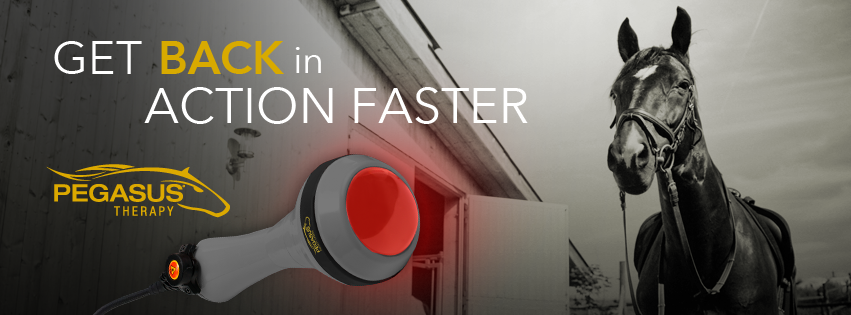Why Equine Therapy is Becoming a Preferred Choice for Emotional Wellness
Why Equine Therapy is Becoming a Preferred Choice for Emotional Wellness
Blog Article
Just How Laser Therapy in Equine Treatment Is Changing Veterinary Take Care Of Horses
Laser therapy has actually become a transformative strategy in equine vet treatment, offering a non-invasive remedy that accelerates healing and enhances total wellness. Leveraging accurate light wavelengths, this advanced therapy boosts mobile regeneration, decreases inflammation, and mitigates pain. Its efficacy prolongs from bone and joint injuries to chronic disorders like osteo arthritis, significantly improving wheelchair and life top quality for steeds. The portability and flexibility of laser treatment devices additionally emphasize their expanding necessity among vets. As we check out the complex mechanics and real-world successes, the profound influence on equine medical practices becomes significantly evident.
Comprehending Laser Therapy

The technology behind laser therapy is grounded in the concept of photochemistry, where photons are soaked up by chromophores within cells, resulting in enhanced ATP manufacturing and inflection of responsive oxygen species (Equine Therapy). This, in turn, advertises cellular proliferation, decreases inflammation, and speeds up healing. Veterinary specialists utilize different kinds of lasers, including low-level lasers (LLLT) and high-power Class IV lasers, depending upon the particular therapeutic purposes and the nature of the equine condition being treated
Various laser wavelengths and power setups are meticulously chosen to target numerous tissue midsts and attain wanted professional end results. Security procedures are vital, as incorrect use can cause thermal damage or suboptimal therapeutic results. Therefore, a thorough understanding of laser treatment's devices and applications is essential for its reliable application in equine vet practice.
Benefits for Horse Health And Wellness
The myriad benefits of laser treatment for equine health incorporate enhanced recovery, discomfort reduction, and boosted movement. This advanced treatment method leverages particular wavelengths of light to permeate tissues, stimulating mobile feature and promoting fast cells repair work. The non-invasive nature of laser treatment makes certain very little stress and anxiety and discomfort for the equine, facilitating a smoother healing procedure.
Boosted recovery is one of the foremost advantages, as laser therapy speeds up cellular regrowth and collagen synthesis. Pain decrease is attained via the anti-inflammatory results of laser treatment, which decreases swelling and reduces the production of pain-inducing chemicals.
Enhanced flexibility is another vital advantage, specifically for efficiency and working horses. By minimizing inflammation and pain, and improving tissue repair work, laser treatment helps in restoring joint function and muscle adaptability. The collective result of these advantages is not only a quicker return to normal activity but additionally a total improvement in the equine's high quality of life. Therefore, laser therapy stands as a transformative device in contemporary equine veterinary treatment.
Usual Conditions Treated
Laser treatment has become a functional therapy alternative for a range of usual equine problems. Amongst these, musculoskeletal injuries are specifically responsive to laser therapy. Equine Therapy. Soft cells injuries, such as tendonitis and ligament pressures, advantage from the anti-inflammatory and analgesic effects of laser therapies, which speed up healing and minimize discomfort. In addition, laser therapy is reliable for conditions like osteo arthritis, where it assists mitigate joint swelling and promote tissue fixing.
Wound administration is another area where laser treatment has actually shown considerable pledge. Chronic wounds or slow-healing ulcers can be specifically difficult in steeds, but laser treatment boosts cellular regeneration and boosts blood circulation, thus speeding up the recovery process. Laser therapies have actually been effectively utilized in taking care of unguis conditions Home Page such as laminitis and abscesses, easing discomfort and promoting quicker recuperation.

Modern Technology Behind Laser Treatment
Past the myriad conditions treatable with laser therapy, the modern technology itself advantages better assessment. At the heart of laser therapy is the use of specific wavelengths of light to penetrate cells and evoke biological actions. These wavelengths, normally varying from 600 to 1000 nanometers, are selectively absorbed by chromophores in the skin, muscle, and various other tissues, instigating a cascade of cellular events.
Laser tools made use of in vet medicine frequently utilize low-level laser treatment (LLLT) or cold laser treatment. Unlike high-powered medical lasers, these gadgets operate at reduced power degrees, maximizing therapeutic advantages while decreasing thermal damages. The power from the laser light stimulates adenosine triphosphate (ATP) manufacturing, boosts mobile metabolic rate, and increases tissue repair procedures.

Success Stories and Study

Showcasing the tangible benefits of laser therapy, many success tales and case studies illuminate its transformative influence on equine health. One such case involves a pedigreed racehorse struggling with chronic tendonitis. Typical therapies generated minimal renovation, yet after incorporating laser treatment right into the routine, the equine displayed considerable reductions in inflammation and pain within weeks, eventually returning to competitive auto racing.
An additional engaging instance features a dressage horse diagnosed with important site extreme back discomfort, restricting its performance. A veterinary team employed low-level laser treatment (LLLT) to target the swollen locations, leading to marked improvement in adaptability and a notable decline in pain. Over a number of sessions, the horse regained its peak form, showcasing the efficiency of laser treatment in resolving bone and joint problems.
Furthermore, a study conducted at a leading equine facility examined 50 steeds with different soft tissue injuries treated with laser treatment. The outcomes stood out: 85% of the equines demonstrated increased recovery times and boosted wheelchair. These cases emphasize the adaptability and effectiveness of laser treatment in equine medicine, supplying a non-invasive, scientifically-backed strategy to improving recovery and efficiency in horses.
Verdict
Laser therapy is revolutionizing equine vet care by offering a non-invasive treatment that speeds up healing, reduces inflammation, and minimizes discomfort. With its efficiency in dealing with a range of problems, from musculoskeletal injuries to chronic disorders like osteoarthritis, this innovation significantly improves equine wellness and movement. The mobility and flexibility of laser therapy additionally emphasize its transformative influence on veterinary techniques, solidifying its function as an essential device in modern-day equine healthcare.
Report this page